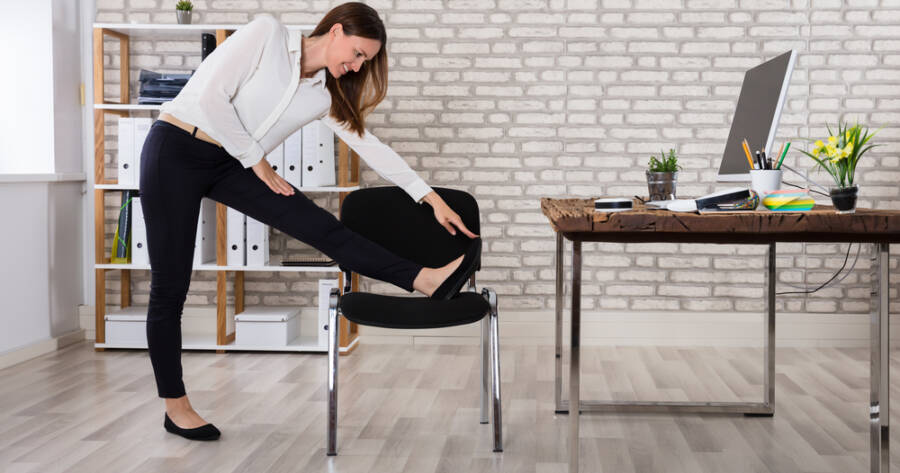Stretching is often seen as optional — something you do only after a workout or when your muscles feel tight. But according to physiotherapists, stretching daily can help prevent injuries, ease tension, and improve mobility at any age. A few minutes each day can make a noticeable difference in posture, energy levels, and even sleep. The key is doing the right stretches consistently. Understand how to build a simple, effective routine with guidance rooted in clinical experience.
Why Physiotherapists Recommend Daily Stretching
Physiotherapists often see patients dealing with pain that could have been prevented through regular movement and mobility work. Daily stretching helps counter the effects of long hours spent sitting at a desk, driving, or looking at screens — all of which can shorten and tighten key muscle groups over time.
Stretching isn’t about pushing to extremes. Instead, it’s about gently lengthening muscles to restore their natural function. Over time, this reduces strain on joints and supports healthier movement patterns.
In fact, many physical therapists focus on dynamic and static stretching. Dynamic stretching uses gentle movement to prepare the body for activity, while static stretching involves holding a position for 15 to 30 seconds to promote flexibility. Both have their place in a well-rounded routine.
Morning Routine: Wake Up Your Body
Physiotherapists suggest starting the day with gentle movement-based stretches to get blood flowing and shake off stiffness from sleep. These stretches don’t need to take more than five minutes.
One commonly recommended stretch is the cat-cow, which improves spine mobility and reduces back tightness. Start on your hands and knees, arch your back toward the ceiling (cat), then dip your belly while lifting your head and hips (cow). Repeat for 6–10 cycles.
Another great addition is a standing forward bend. Let your arms hang toward your toes while keeping a slight bend in your knees. This wakes up the hamstrings and lower back.
Neck rolls and shoulder shrugs also help release tension that builds up overnight and support better posture during the day.
If you sit for work, a few minutes of movement before you begin can help reduce the risk of tight hips and a stiff neck later in the day.
Midday Routine: Loosen Up and Refocus
By midday, it’s common to feel tight across the hips, chest, and shoulders — especially for those working at a desk. This is a good time to do stretches that reverse the effects of sitting and help re-energize the body.
The hip flexor stretch is a favorite among physiotherapists. Kneel on one leg, keeping the other foot flat in front. Gently press your hips forward until you feel a stretch in the front of the kneeling leg. Hold for 20–30 seconds and switch sides.
Another highly recommended move is the thoracic spine opener. Sit on the floor with your knees bent and feet flat. Let your knees fall to one side while twisting your upper body in the opposite direction. This stretch targets the mid-back, which often stiffens during computer work.
Midday is also a good time for wrist stretches, especially if you spend hours typing. Extend one arm straight, palm up, and gently pull the fingers back with your other hand. Reverse the hand for a second stretch and hold each for about 15 seconds.
Evening Routine: Wind Down and Recover
An evening stretching routine helps release the day’s physical tension and supports better sleep. Physiotherapists often include longer holds and deeper stretches at this time to help the body fully relax.
The seated hamstring stretch is a common pick. Sit on the floor with one leg extended and the other bent inward. Reach toward your foot, keeping your back long. This stretch soothes the legs after walking or standing all day.
The figure-four stretch is another go-to. Lie on your back with one ankle crossed over the opposite knee. Gently pull the bottom leg toward your chest until you feel a stretch in the outer hip. This is helpful for easing lower back pressure as well.
Ending your routine with a child’s pose can promote a calm, grounded feeling. Kneel on the floor, reach your arms forward, and let your forehead rest on the mat. Focus on deep breathing for 30 to 60 seconds to signal your body that it’s time to rest.
Tools That Can Help (But Aren’t Required)
While a basic stretching routine requires nothing but floor space and a little time, some tools can make it easier and more effective. Physiotherapists often recommend foam rollers, yoga straps, or stretching bands to help support posture and reduce strain.
Foam rolling before stretching can help release muscle tension and increase blood flow. A yoga strap makes it easier to hold leg stretches without straining your back or shoulders. These tools are commonly used in physical therapy settings and can be found at most fitness stores.
Just remember, no tool replaces good form and consistency.
A Small Habit with Big Benefits
Daily stretching may seem simple, but it can have a lasting impact on how you feel and move. Backed by physiotherapists and easy to adapt for any lifestyle, a regular routine helps prevent stiffness, improve posture, and increase mobility.
Whether you stretch for five minutes in the morning or wind down in the evening with deeper holds, what matters most is that you keep showing up. With just a few stretches a day, you’re giving your body the care it needs to move through life with less pain and more ease.

